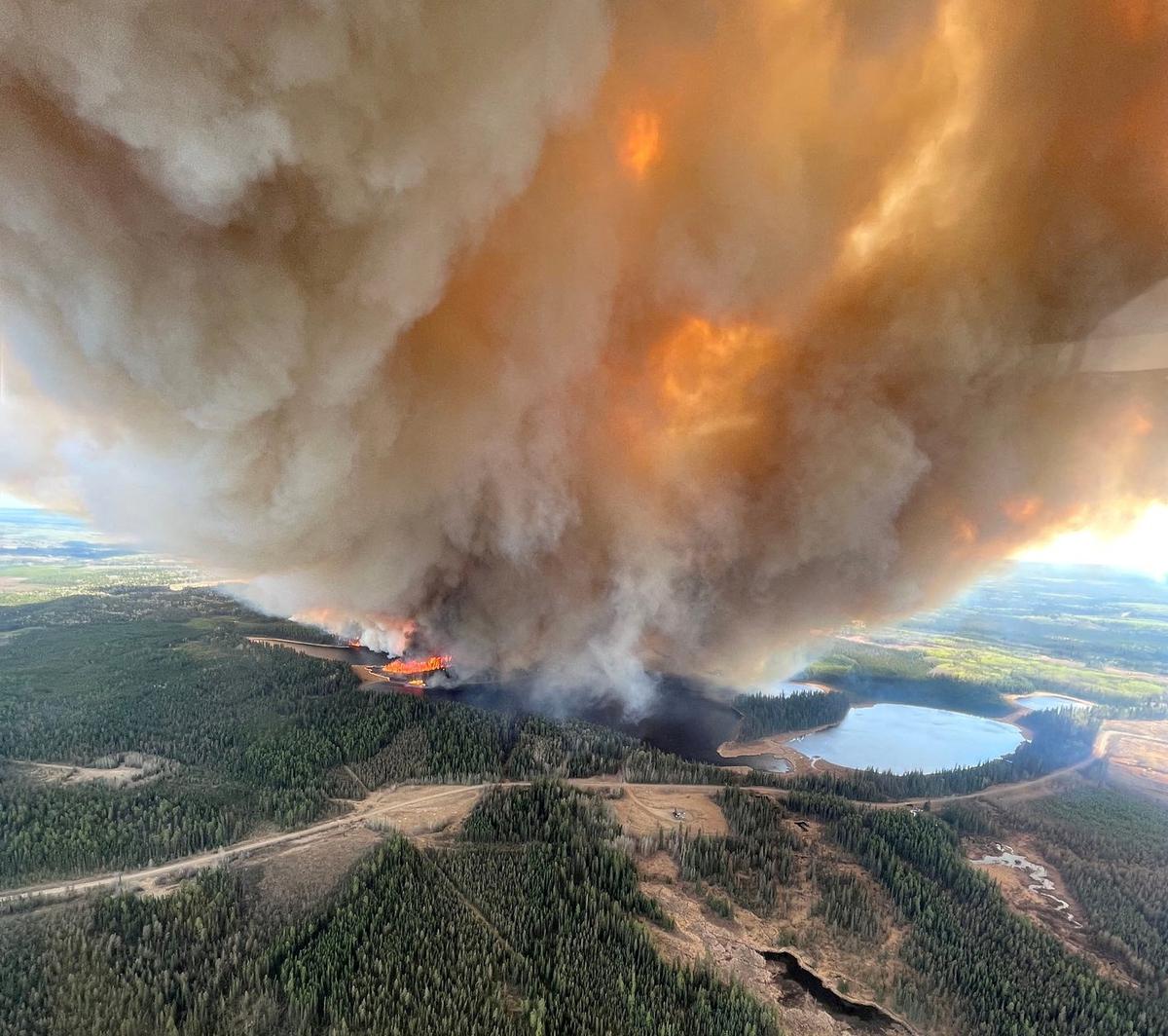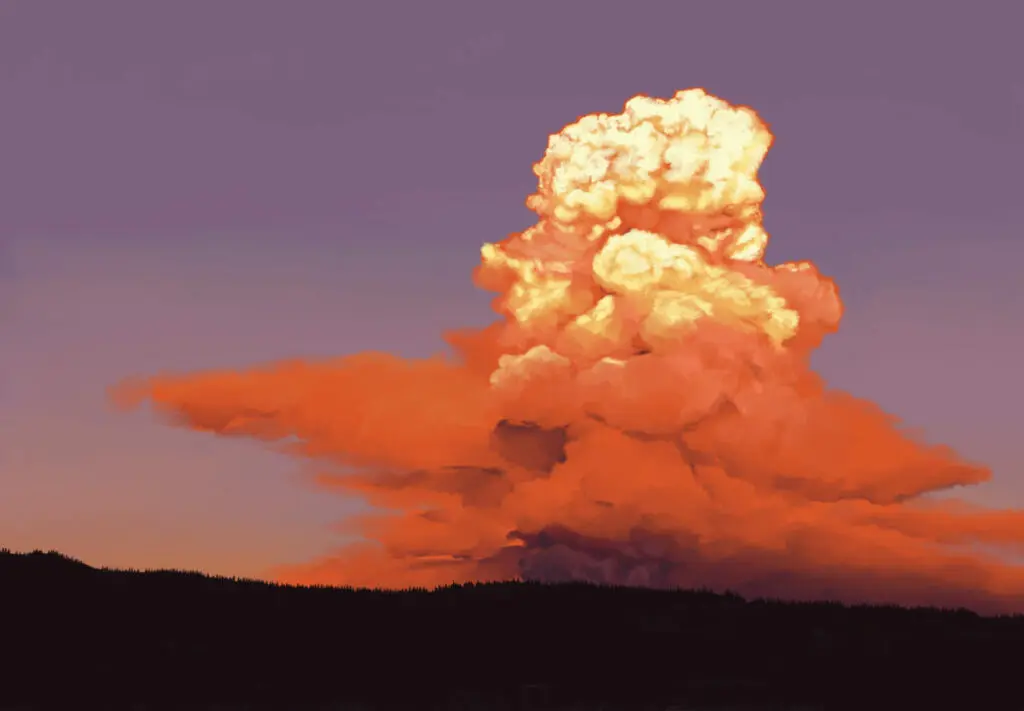Understanding the Causes and Consequences of Canada's Wildfires: A Wake-Up Call for Climate Action
Canada has been grappling with severe wildfires that have caused widespread destruction to its forests and communities, resulting in the displacement of thousands of people.

Introduction
Canada has been grappling with severe wildfires that have caused widespread destruction to its forests and communities, resulting in the displacement of thousands of people. These wildfires have triggered rumors and misinformation, particularly regarding the role of climate change in their occurrence. In Canada, approximately 8,000 wildfires occur annually, with densely forested regions being particularly vulnerable during periods of dry weather and drought. These fires can rapidly spread, leading to the devastation of communities, the loss of buildings and infrastructure, and tragically, the loss of human lives.
Climate Change and Wildlife Risk:
Canada has been grappling with severe wildfires that have caused widespread destruction to its forests and communities, resulting in the displacement of thousands of people. These wildfires have triggered rumors and misinformation, particularly regarding the role of climate change in their occurrence. In Canada, approximately 8,000 wildfires occur annually, with densely forested regions being particularly vulnerable during periods of dry weather and drought. These fires can rapidly spread, leading to the devastation of communities, the loss of buildings and infrastructure, and tragically, the loss of human lives.

Human Factors and Wildfire Management
A significant number of the over 2,000 fires that have occurred in Canada this year are believed to have been ignited by human activities. In certain regions like Quebec, some fires were started by lightning strikes. The risk of severe fires has also been attributed to factors such as the presence of dead trees and inadequate forest management practices. According to experts, the prevailing approach of completely suppressing fires can prevent forests from developing natural firebreaks, which historically helped to limit the spread of wildfires. It is widely acknowledged that effective collaboration among stakeholders is crucial in order to minimize the impacts of these destructive wildfires.
Wildfires play a vital role in Canada's ecosystems, promoting forest health and diversity. However, the frequency and intensity of wildfires are on the rise due to climate change and certain forest management practices. This increase in wildfires poses significant risks to communities, including exposure to smoke, destruction of properties, the need for evacuation, and potential loss of life. Additionally, climate change is causing an alarming rate of biodiversity loss, putting approximately one million species at risk of extinction.
Ecological Impact and Loss of Biodiversity
The ecological impact of wildfires is profound. While they are a natural occurrence, the increasing intensity and frequency of wildfires can have severe consequences for biodiversity and ecosystem stability. Here's a closer look at the ecological impact and loss of biodiversity caused by wildfires:
- Habitat Destruction: Wildfires destroy habitats, particularly in forests, affecting countless plant and animal species. Species that rely on specific habitats or have limited ranges may face the loss of their homes and struggle to survive.
- Disruption of Food Chains: Wildfires disrupt food chains by eliminating or drastically altering the availability of food sources for various species. The loss of vegetation, including key forage plants, affects herbivores, which subsequently impacts predators higher up in the food chain.
- Endangered and Threatened Species: Many endangered and threatened species are particularly vulnerable to the impacts of wildfires. These species may have specialized habitat requirements or limited populations, making them more susceptible to habitat destruction and population decline.
- Regeneration Challenges: Although wildfires are a natural part of the ecosystem, the increasing intensity can hinder the natural regeneration process. High-severity fires can leave behind barren landscapes with little remaining vegetation, making it difficult for new plant growth and the re-establishment of diverse ecosystems.
- Post-Fire Succession: Following a wildfire, the process of ecological succession begins, with different plant and animal species gradually recolonizing the area. However, in cases of severe wildfires or in ecosystems with specific ecological requirements, the process of recovery and the return of biodiversity may be prolonged or altered.
- Ecosystem Services: Biodiversity loss resulting from wildfires also impacts ecosystem services that are crucial for human well-being. These services include air and water purification, pollination, nutrient cycling, and climate regulation. The disruption of these services can have far-reaching consequences for human societies.

Addressing the ecological impact and loss of biodiversity caused by wildfires requires a multi-faceted approach. This includes implementing effective wildfire management strategies, such as controlled burns, that mimic natural fire regimes and promote ecosystem health. Conservation efforts, habitat restoration, and protection of endangered species are also vital to mitigate the long-term consequences of wildfires on biodiversity. Additionally, addressing climate change and reducing greenhouse gas emissions is fundamental to curbing the increasing intensity of wildfires and safeguarding ecosystems and biodiversity for future generations.
Socioeconomic Consequences and Community Resilience
Wildfires can impose substantial socioeconomic burdens on communities, resulting in property damage, forced evacuations, and even loss of life. The ability of a community to cope with and recover from such crises lies in its resilience. Community resilience comprises various elements, including the socioeconomic context, community assets, and social capital, which collectively contribute to overall system resilience and adaptation. It is crucial to recognize and address the social, emotional, and economic impacts of wildfires, along with their far-reaching ripple effects on the affected community. By understanding and responding to these challenges, communities can better navigate the recovery process and foster long-term resilience in the face of future wildfire events.
Indigenous Knowledge and Traditional Fire Practices
Indigenous knowledge and traditional fire practices hold significant potential in addressing the ongoing wildfire crisis. Indigenous communities have a long-standing history of using fire as a tool for land management, dating back thousands of years. By incorporating fire into their practices, they shaped the landscape and created natural firebreaks, effectively reducing the spread of wildfires. Traditional Indigenous methods involve early-season burning of native grasses, employing small fires ignited in a mosaic pattern. These practices aim to restore ecological balance and mitigate the risk of wildfires. Recognizing and integrating Indigenous knowledge and practices can contribute to more holistic and sustainable approaches in managing wildfires, promoting ecosystem health, and reducing the threat of uncontrolled fires.
FAQs
What started the Canadian wildfires?
The plume was birthed from nearly 400 fires ignited in Canada's province of British Columbia in the past week, nearly half of which were started by 51,000 lightning strikes from thunderstorms, the British Columbia Wildfire Service said.
Where are the Canada wildfires?
Most of the smoke affecting North America this week is coming from fires in western Canada - British Columbia, Alberta, and the Northwest Territories - unlike last month when most was coming from fires in Quebec. Officials have said that this summer Canada has seen its worst wildfire season on record.
Which country gets the most wildfires?
Global Wildfires by the Numbers
- California, Washington, and Oregon – United States.
- Amazon Rainforest – Brazil.
- Siberia and the Arctic.
- Indonesia.
- Australia.
What's the biggest fire in history?
The biggest wildfire in recorded US history is the 1825 Miramichi Fire. It blazed through an estimated 3,000,000 million acres and claimed at least 160 lives.
Conclusion
Canada's wildfires are not just local disasters; they are symptoms of a global climate crisis that requires immediate attention. Understanding the causes and consequences of these fires underscores the urgency for comprehensive climate action. By addressing climate change, promoting sustainable practices, and fostering collaboration between communities, governments, and Indigenous groups, we can work towards a future where Canada's landscapes are protected, its ecosystems thrive, and its communities are resilient in the face of wildfire challenges. Together, we can mitigate and adapt to the escalating wildfire crisis and build a more sustainable and resilient future for Canada and the planet.




